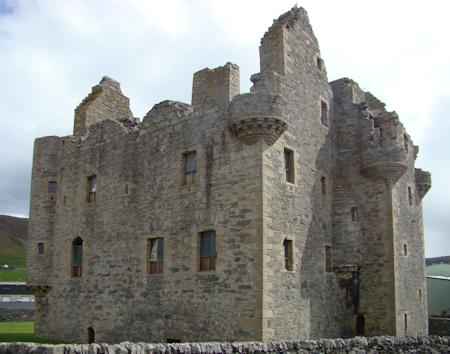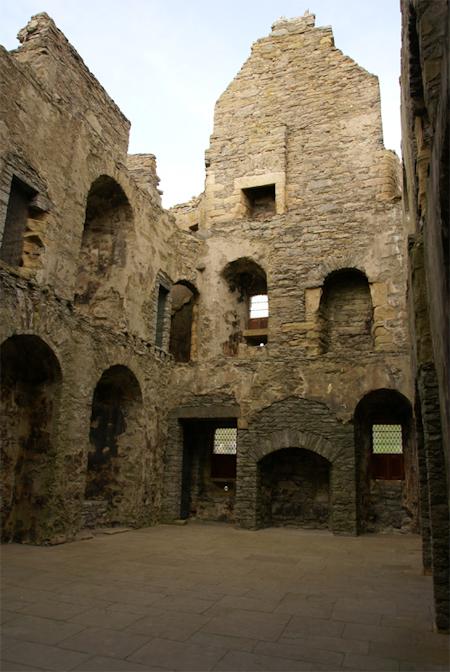
Scalloway Castle
Scalloway Castle is a 17th Century L-plan keep. It was built in 1600 for Shetland's tyrannical 'ruler' Earl Stewart. After his execution the castle was used as a law court for a time before being abandoned.
Scalloway Castle was built by the notorious Patrick Stewart, 2nd Earl of Orkney. He was possibly one of the most despised men in the history of the Northern Isles.
Scalloway Castle's First Laird
Scalloway was Shetland's ancient capital. It was natural then that Patrick built his castle here to strengthen his power base and to dominate the island.
Patrick's father, Robert Stewart the first Earl, had largely ignored Shetland preferring instead to oppress and extract as much wealth as he could from the Orkney islanders. He was imprisoned for a few years on a number of charges including colluding with Shetland pirates and obtaining a letter from the King of Norway declaring him sovereign of Orkney.
Patrick was even worse than his father. He was corrupt and brutal and very much focussed on Shetland. He had rescinded many of the islanders' traditional customs and privileges and not only had the islanders to pay for the materials for Scalloway Castle; he forced them to build it for him too.
Not content with extorting every penny he possibly could from the local populace Patrick's fleet also intercepted foreign shipping passing the islands and extracted a tribute from them too.
Scalloway Castle Layout
It's no wonder then that Scalloway Castle is well defended. It sat surrounded by water on three sides and had bartizan turrets on each of its angles. The main entrance sat in the angle of the L covered by flanking fire from the main block.
The Earl himself was said to have a personal guard of "fifty musketeers" and had amassed "a great collection of guns".
Inside the castle, the vaulted ground floor held the castle's kitchens and a well. The main hall where the Earl dispensed his justice and held court was on the first floor. The top two floors held the residential rooms for Earl and his family.
Patrick's downfall came in 1614. He was in prison in Edinburgh when his son Robert organised an armed rebellion in Orkney. They were defeated by the Earl of Caithness and Robert was brought to Edinburgh. They were both tried and executed in 1615.
After the Earl's death the castle was taken over by Bishop James Law. It remained the main administrative centre for the island and also acted as a courthouse.
In the 1650s it was occupied by Cromwellian troops who used it as a barracks.
By the 1700s it was in a state of decay with some reports of a leaking roof. Shetland's capital shifted to Lerwick in 1708 and Scalloway Castle was abandoned. Its decline was further hastened when some of its stone was carted away to build a nearby mansion house in the mid-18th Century.
The castle passed into state care in 1908 and it is cared for today by Historic Scotland. There are no facilities at the castle; however it is just a short walk from the town centre and its amenities. The castle is ordinarily locked, but a key can be obtained from the nearby Scalloway Museum during its normal opening hours.
Status: Monument
Owner: Historic Scotland
Tel: +44 (0)1856 841 815
Website: www.historic-scotland.gov.uk
Opening Times: Spring to Autumn Mon-Sat 11am-4pm Sun 2pm-4pm


Entrance to Scalloway Castle

Inside the hall at Scalloway